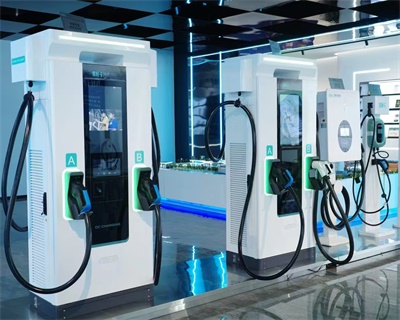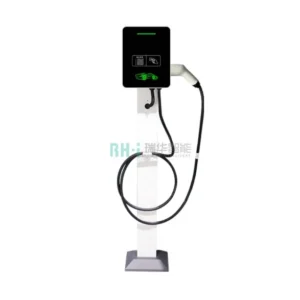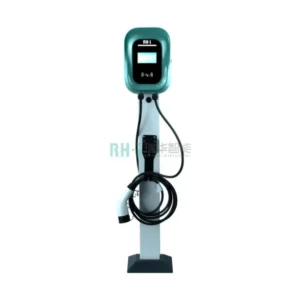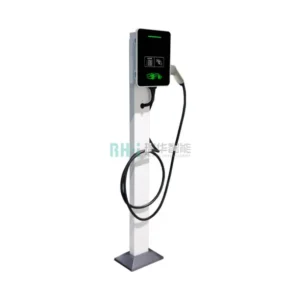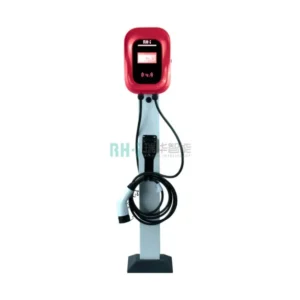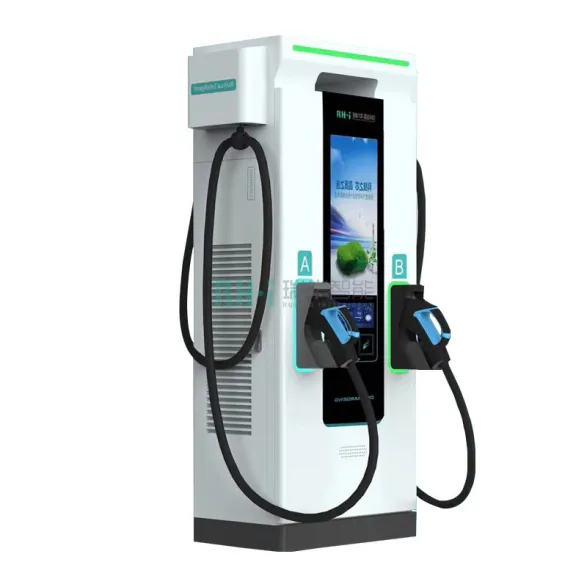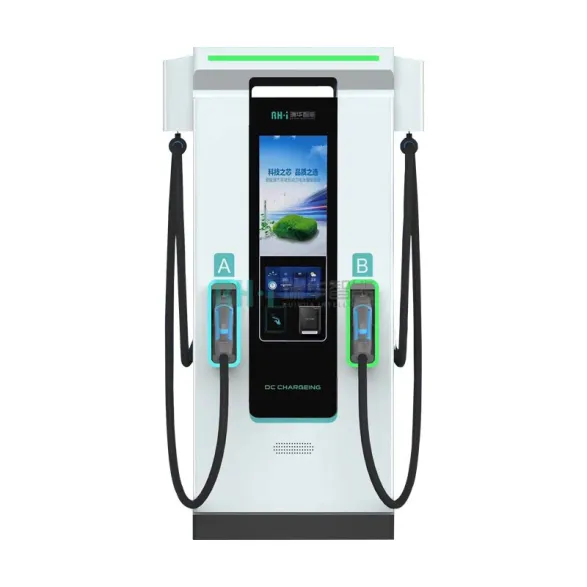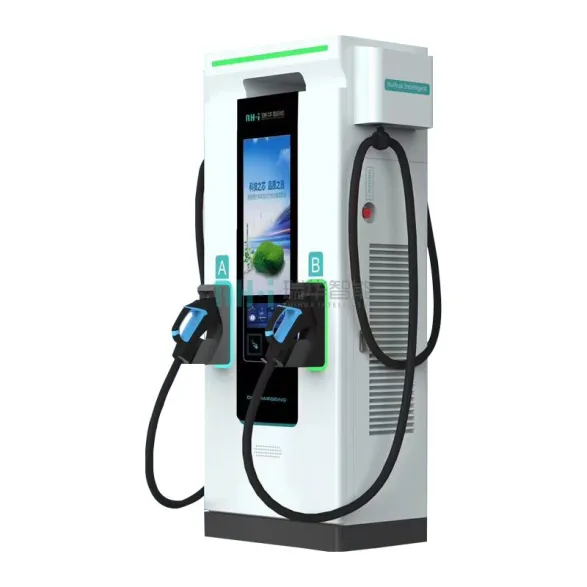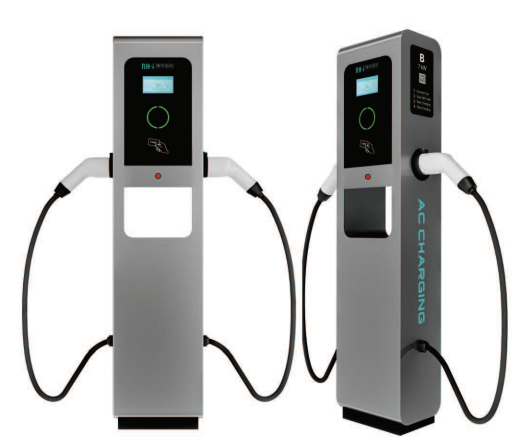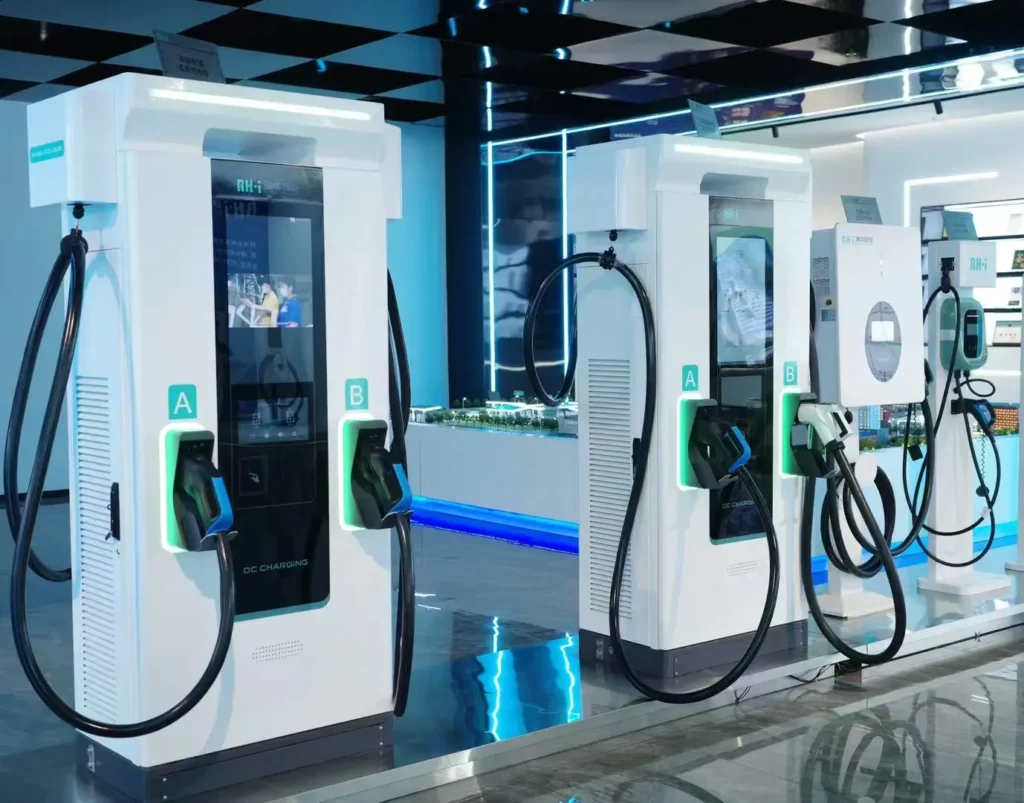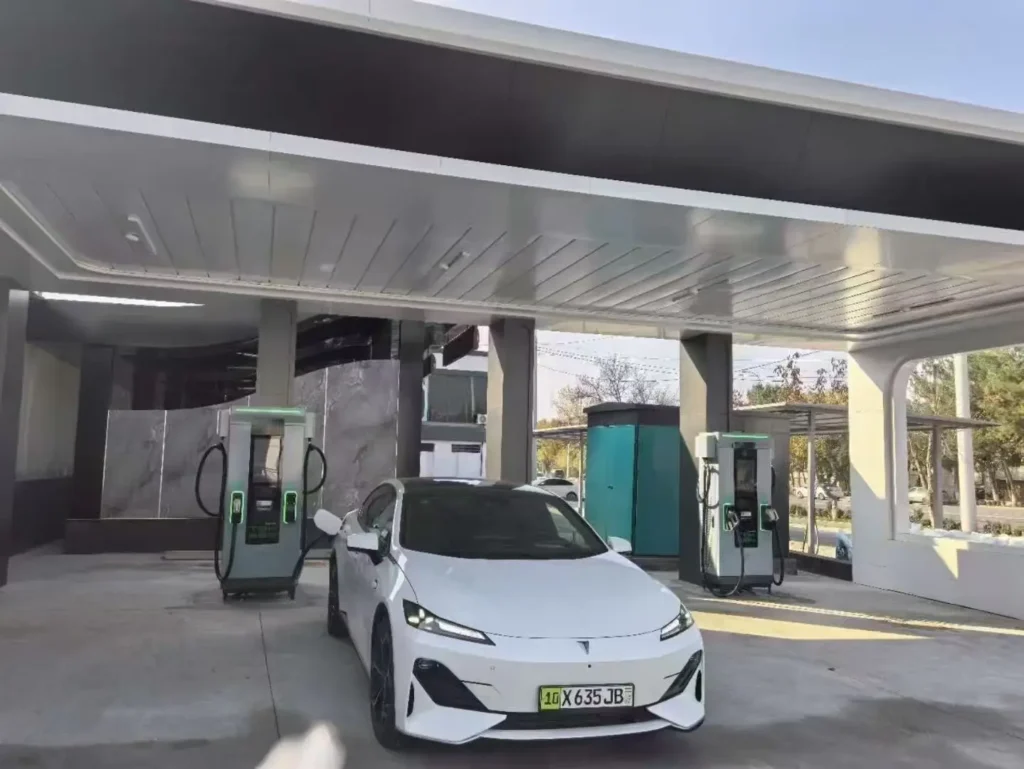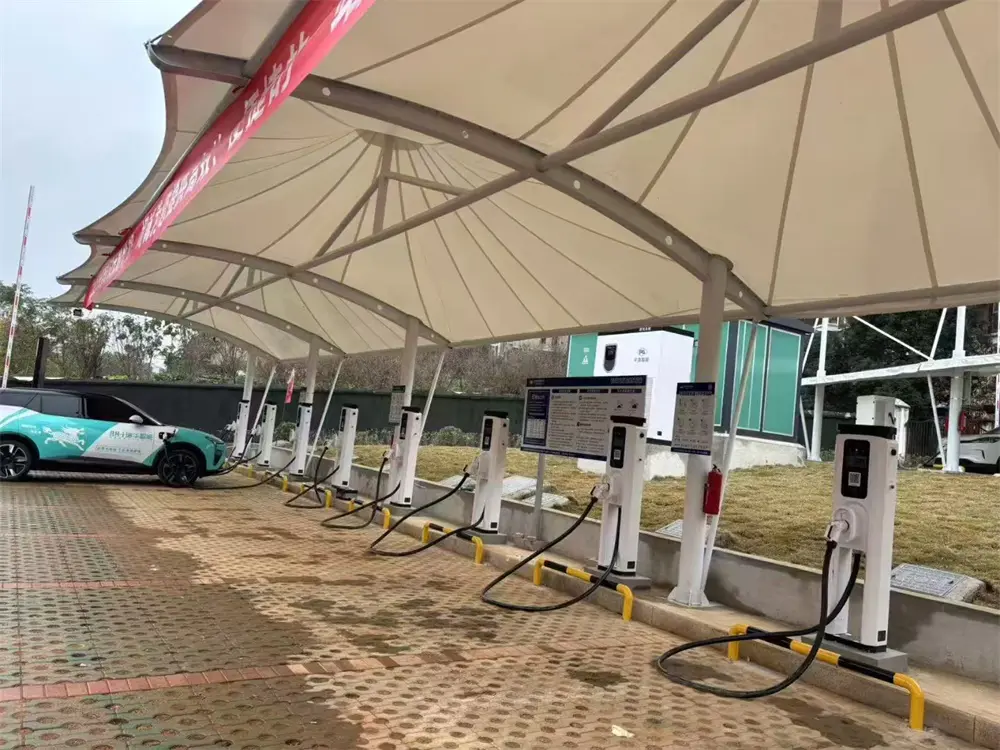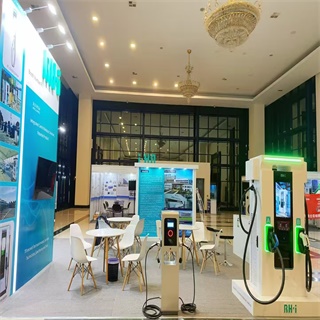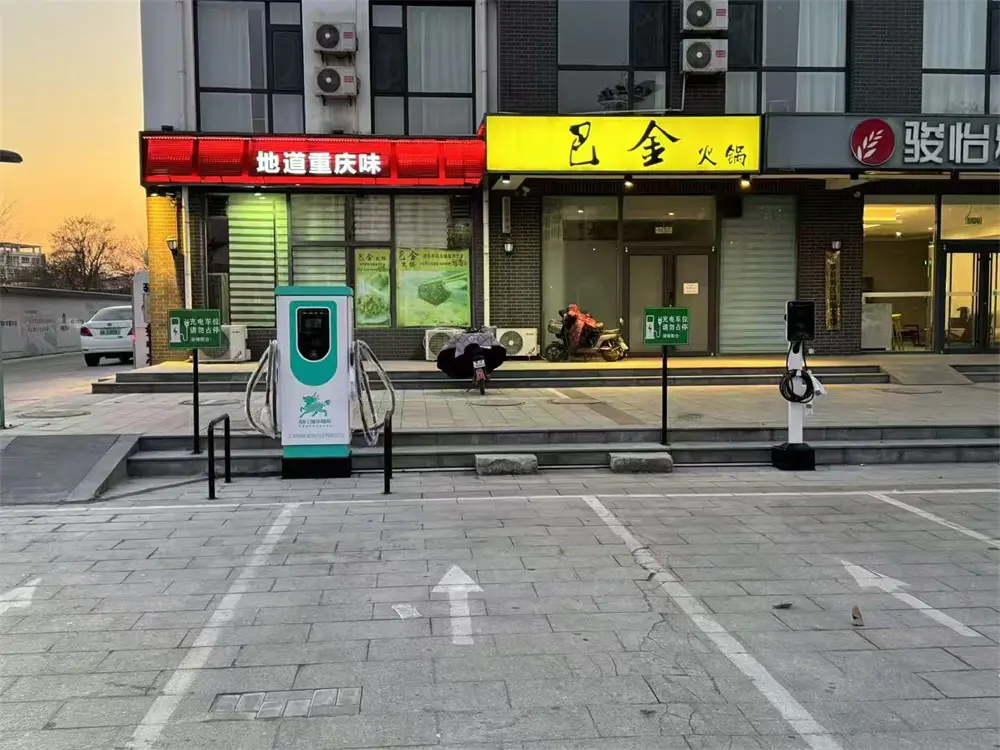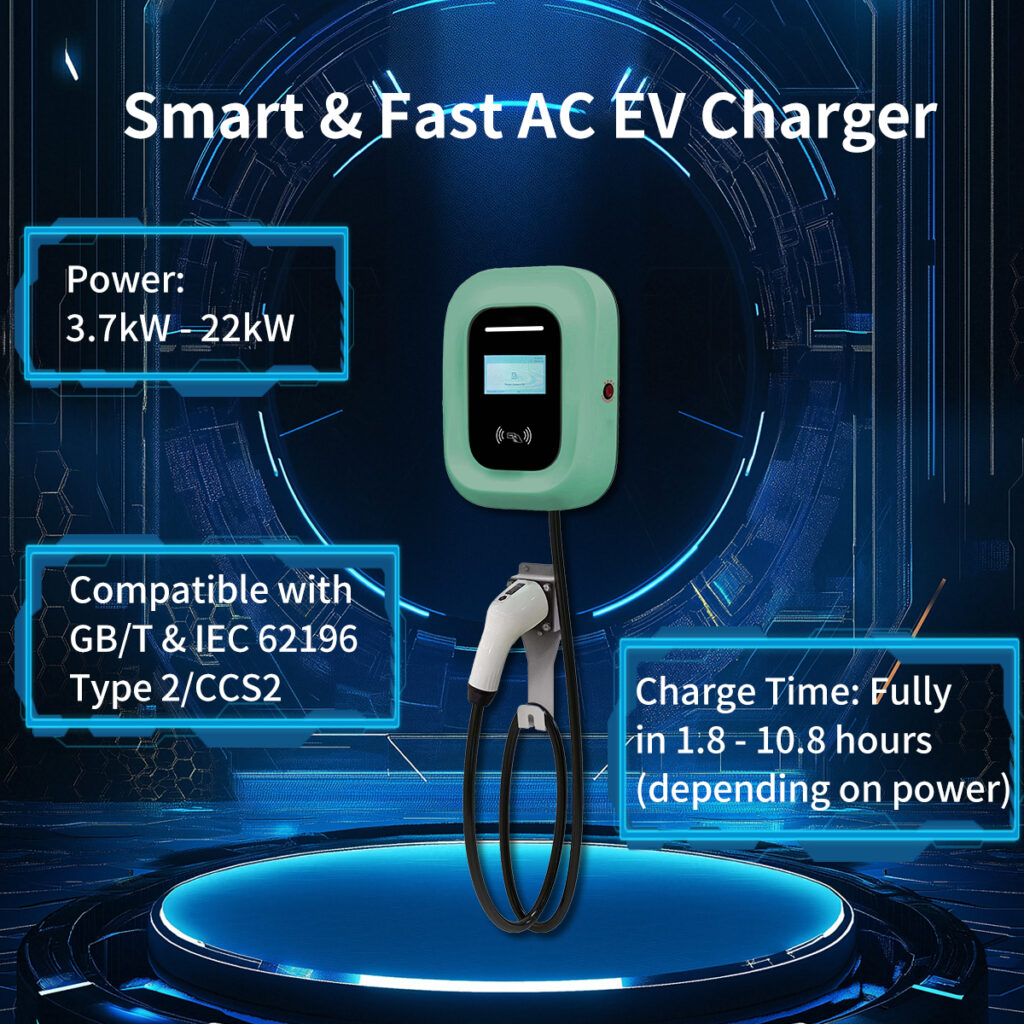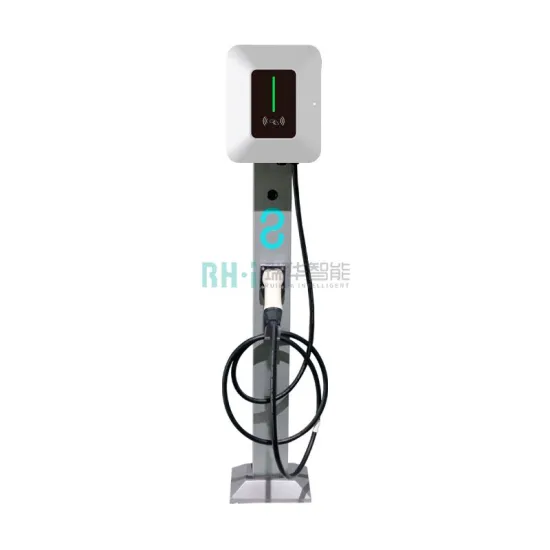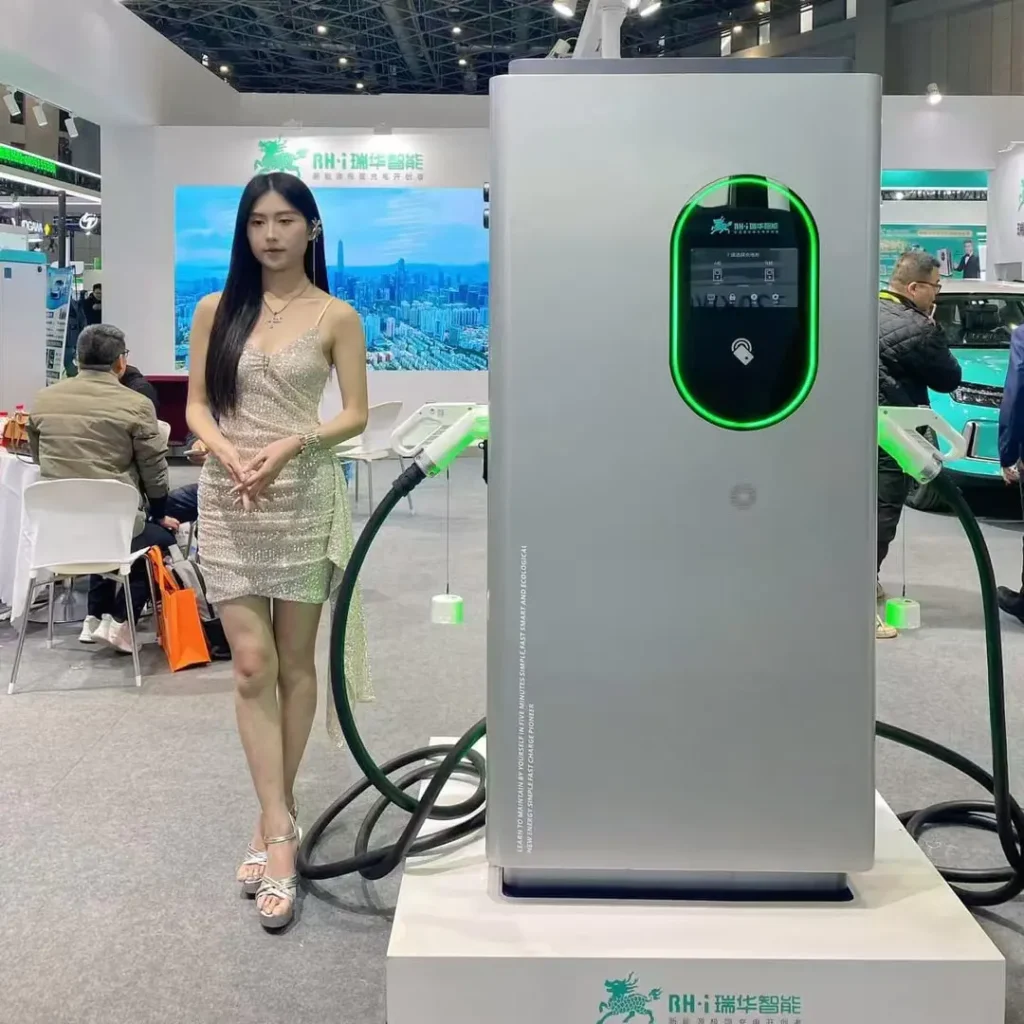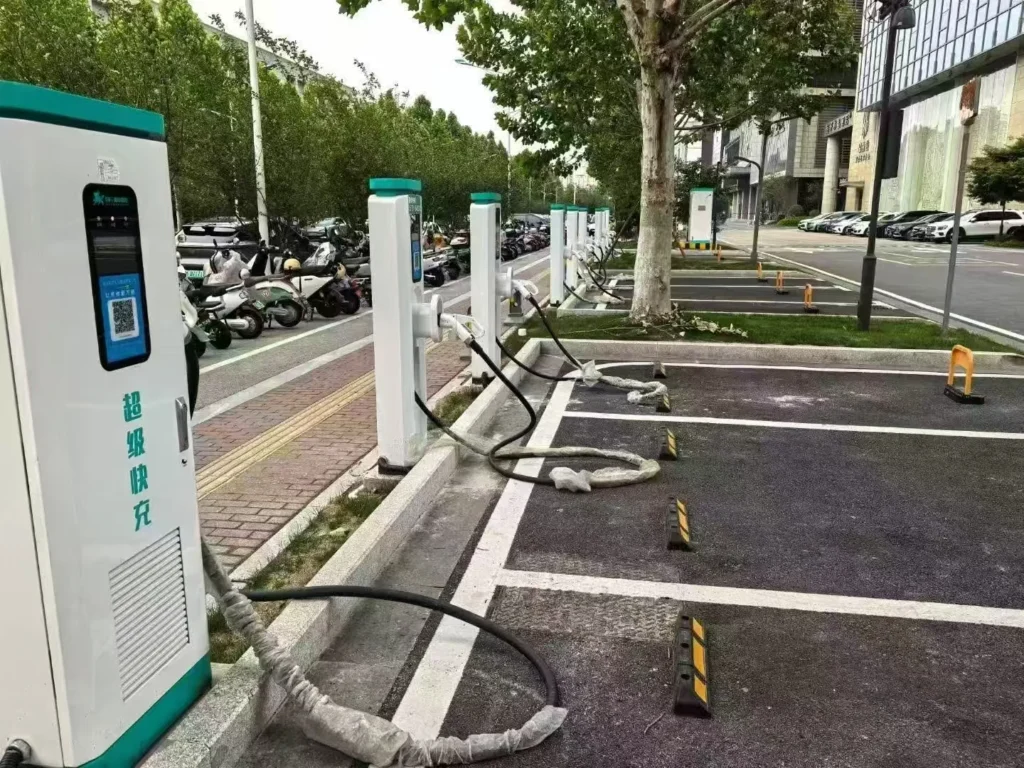Outdoor EV Charging Post, Electric Vehicle (Car) Charging
RUIHUA high performance EV Charging Post, built for commercial and residential applications. It supports fast charging with IP54 level weatherproof protection. It is also compatible with GB/T, CCS2 and other standards, making charging more convenient and reliable.
Intelligent management makes charging more efficient. Through the cell phone APP, users can remotely book charging appointments, check the charging status in real time, make payments online, and also quickly navigate to nearby vacant charging piles, enjoying the full process of self-service, saving time and worry.
Whether for domestic, commercial or public use, our charging Post can be adapted to all mainstream electric vehicle brands, easily meeting a variety of needs.
Choosing our charging posts is not only the pursuit of efficient charging, but also the support of green mobility. Every charge is a contribution to sustainable development, making the world a cleaner place and the blue sky a step closer.
7kw/11kw/21kw EV charging Post Specifications
| Specifications | Model | RHAC7K-XC | RHAC11K-XC | RHAC21K-XC |
| Input | Powersupply | 1P+N+PE | 3P+N+PE | 3P+N+PE |
| Rated Voltage | 230V+15% | 400V+15% | 400V+15% | |
| Rated Current | 32A | 3*16A | 3*32A | |
| Frequency | 50/60 Hz | 50/60 Hz | 50/60 Hz | |
| Output | Output Voltage | 230V+15% | 400V+15% | 400V+15% |
| Maximum current | 32A | 3*16A | 3*32A | |
| Rate Power | 7kw | 11kw | 22kw | |
| Userinterface | charge connector | Type 2 cable | ||
| Cable Length | 5 m | |||
| LED Indicator | Green/blue/Red | |||
| Lco Display | 4.3 inch LcD | |||
| RFID Reader | MifarelsO/IEC14443A | |||
| Starting Methods | Plug&Play/RFiD card/App | |||
| Emergency stop | Yes | |||
| Network connection | LAN | Yes | ||
| 4G | optional | |||
| wifi | Yes | |||
| Bluetooth | Yes | |||
| OCPP | OCPP 1.6J | |||
| Safety Measures | Energy Meter | Yes | ||
| RCD | 6mADC | |||
| Ingress Protection | IP54 | |||
| ImpactProtection | lk10 | |||
| Electrical Protections | Overcurrent protection Residual current protection Surge protectionOver/Under voltage protectionOver/under Frequency protection overtemperature protection | |||
| Certification | CE/CB | |||
| Certification Standards | ENIEC 61851-1:2019,1EC61851-1:2017,EN61851-21-2:2018 | |||
| Warranty | 2 Years | |||
| OperatingConditions | Installation | Wall-mount/Pole-mount (optional) | ||
| Operating Temperature | -30°C~+50°C | |||
| Humidity | 5%~95% | |||
| Altitude | <2000m | |||
| Packaging | ProductDimension | 350*250*122 mm (H*W*D) | ||
| Package Dimension | 550*350*220 mm(L’W’H) | |||
| Net welght | 6.5 kg | 7.skg | 9.skg | |
| Gross Weight | 7.5kg | 8.5kg | 10.5kg | |
| others | Carton | |||
Technical differences between DC and AC charging posts
In the field of electric vehicle charging, DC charging post and AC charging post have significant differences in charging speed, efficiency and impact on battery and power grid due to their different working principles and application scenarios.
Technical differences between DC and AC charging piles
- Charging method: AC charging post needs to rely on on-board charger (OBC) to convert AC power to DC power, while DC charging post provides DC power directly to the battery without OBC conversion, which makes charging faster.
- Charging power: AC charging posts usually have low power (3.7kW-22kW) and are suitable for home and office scenarios, while DC charging posts have high power (30kW-350kW), such as the 180kW DC post in webpage 2, which has an output voltage range of 200V-1000V, and can be adapted to different battery systems to realize more efficient charging.
- Charging efficiency: AC charging efficiency is affected by OBC and is generally 85%-90%, while DC charging post integrates high-efficiency power conversion module internally, for example, the efficiency of 180kW DC post can be up to 95%, which reduces energy loss and improves charging speed.
Multi-standard compatibility:
The standardization of charging post interfaces still faces many challenges in the global electric vehicle market. Taking SCU Power charging pile as an example, it supports a variety of protocols such as CCS, CHAdeMO, GB/T, etc., which demonstrates the adaptability of the current charging equipment to the compatibility of the global market.
However, due to the differences in technical standards, policies and regulations, and market demand among countries, the unification of charging interfaces is still an important issue for the industry.
Regional distribution of charging interface standards
At present, the global EV charging standards are mainly categorized as follows:
- CCS (Combined Charging System): Europe and North America mainly adopt the CCS standard, of which CCS1 is used in the United States and CCS2 is applicable to Europe.
- CHAdeMO: Japan’s leading fast charging standard, still used in Asia and some European markets, but market share is gradually replaced by CCS.
- GB/T (National Standard): National standard adopted in China, applicable to all electric vehicles in the country.
Tesla Supercharger: Tesla adopted a proprietary interface in the early days, and has gradually opened up to the North American standard (NACS) recently.
Different standards in different countries and regions have led to the need for car companies and charging facility manufacturers to provide multi-standard compatible charging piles, such as SCU Power charging piles that support CCS, CHAdeMO, and GB/T, to meet different market demands.
Trend of charging interface standardization
- CCS becoming a global mainstream standard: European, North American and some Asian markets have gradually moved closer to the CCS2 standard. For example, some new models in Japan have begun to support CCS, and Tesla has adopted NACS (based on CCS1) in North America, showing that the CCS standard is becoming a global unifying trend.
- China’s GB/T standard is in line with international standards: In the future, China’s national standard (GB/T) may achieve better interoperability with the CCS2 standard by being compatible with international communication protocols such as ISO 15118.
- Smart charging and V2G (Vehicle-to-Grid) development: With the development of smart charging technology and V2G (Vehicle-to-Grid), standardization is no longer limited to hardware interfaces, but involves broader dimensions such as smart management, payment systems and energy return.
Modularity and Scalability
In the construction of electric vehicle charging infrastructure, modular split charging system has become an important development direction. Taking EVMS-240 as an example, the system supports flexible output of up to 8 gun heads, realizing efficient power distribution and modular design. This architecture not only optimizes O&M costs, but also provides greater flexibility in future power upgrades.
The significance of scalability for future power upgrade
- Flexible Adaptation to Different Scenario Requirements: Supporting multiple gun outputs, the charging power can be flexibly configured according to different application scenarios (e.g., highway service areas, commercial vehicle charging stations, urban public charging stations). For example, 4 guns can be selected in the initial deployment, and then with the growth of demand, it can be expanded to 8 guns without the need for additional replacement of the main equipment.
- Easy to adapt to higher power standards in the future: With the development of EV battery technology, future EVs may support higher power charging requirements, such as ultra-fast charging at 350kW and above. The modular charging system can be smoothly upgraded by replacing or adding power modules to avoid equipment obsolescence due to insufficient power.
- Support for V2G (Vehicle-to-Grid Interaction) and Smart Charging Networks: Modular systems make it easier to integrate V2G (Vehicle-to-Grid) technology, enabling charging stations to optimize grid loads and improve energy efficiency through vehicle-to-grid interaction in the future.
Related Products
7kw Home Charger, Single Phase EV Charger
Protection level: IP54
Number of guns: single gun design
Charging interface: CCS2, CHAdeMO, GB/T, etc.
11kW EV Charger, Home AC Car Charger
Protection level: IP54
Number of guns: single/dual gun design
Charging interface: CCS2, CHAdeMO, GB/T, etc.
19.2 KW EV Charger, AC Home Charger
Protection level: IP54
Number of guns: single gun design
Charging interface: CCS2, CHAdeMO, GB/T, etc.
Home 22kw EV Charger, AC Charging
Protection level: IP54
Number of guns: single gun design
Charging interface: CCS2, CHAdeMO, GB/T, etc.
30kw DC EV Charger, Charging Station
Protection level: IP54
Number of guns: single gun design
Charging interface: CCS2, CHAdeMO, GB/T, etc.
50kw EV charger price, DC Fast Charging Station
Protection level: IP54
Number of guns: dual gun design
Charging interface: CCS2, CHAdeMO, GB/T, etc.
60kw DC Fast Charger Price, EV Charging Station
Protection level: IP54
Number of guns: dual gun design
Charging interface: CCS2, CHAdeMO, GB/T, etc.
100kw DC Fast Charger Price, EV Charging Station
Protection level: IP54
Number of guns: dual gun design
Charging interface: CCS2, CHAdeMO, GB/T, etc.
120 KW DC Fast Charger Cost, EV Charging Station
Protection level: IP54
Number of guns: dual gun design
Charging interface: CCS2, CHAdeMO, GB/T, etc.
150kw Charging Station, DC Fast Charger Cost
Protection level: IP54
Number of guns: dual gun design
Charging interface: CCS2, CHAdeMO, GB/T, etc.
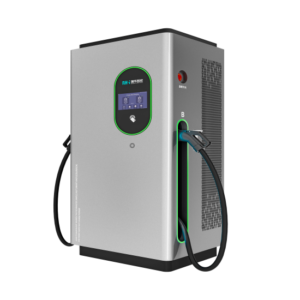
180kw DC Fast Charger, EV Charger
Protection level: IP54
Number of guns: dual gun design
Charging interface: CCS2, CHAdeMO, GB/T, etc.
350 KW EV Charger Price, DC Fast Charging Stations
Protection level: IP54
Number of guns: dual gun design
Charging interface: CCS2, CHAdeMO, GB/T, etc.






